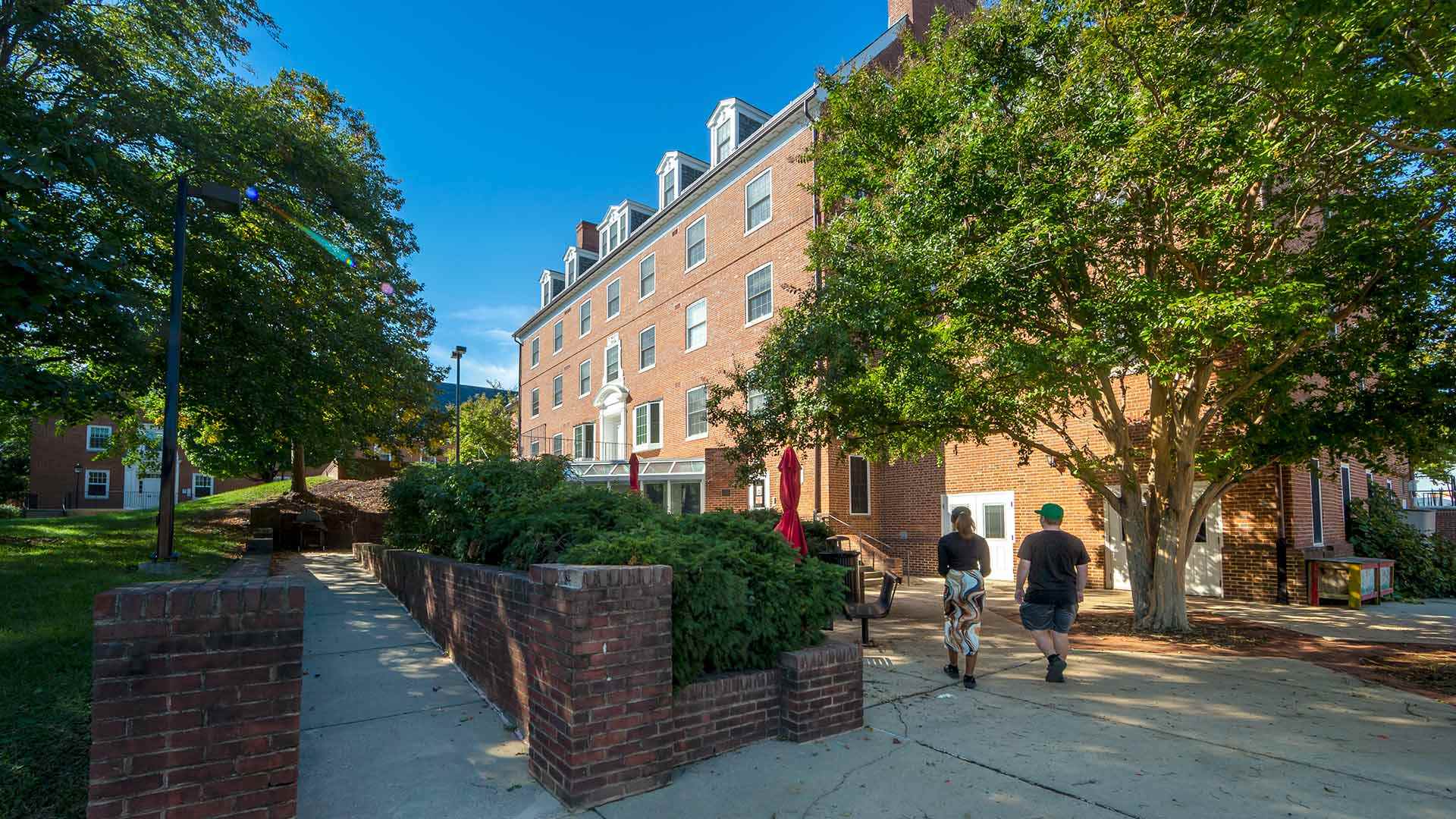What It Takes: The Language House
October 11, 2022

‘Hidden Gem’ Offers Immersive Oasis for Learning More Than ‘Hola’ and ‘Ni Hao’
By Karen Shih ’09 | Maryland Today
It’s nerve-wracking enough to move into a new campus apartment with strangers. Who’s going to take out the trash? Who has a car for grocery shopping? Who gets to control the thermostat?
Now imagine having those conversations in Japanese—or Spanish or Russian or Chinese.
That’s the experience of students in the Language House living and learning program, which connects undergraduates with peers learning the same language so they can practice around the clock.
“Anybody who is interested in improving their language skills can take part in this program,” said Director Marilyn Matar. “For those who can’t travel to other countries, you’re able to get a slice of that immersion. We’re like a big host family.”
The "house,” aka St. Mary’s Hall, is an apartment-style residence hall that usually hosts about 80 students speaking 10 languages: Arabic, French, German, Hebrew, Italian and Persian, in addition to the ones listed above. Students who apply and pass an intermediate oral proficiency interview are assigned apartments based on language. Each cluster has a faculty liaison from the School of Languages, Literatures and Cultures, as well as a native speaker mentor (usually a graduate student) who organizes cultural activities.
Matar and Indy Dorman ’24, a sociology and Japanese double major who lived in the Language House for two and a half years, discuss the challenges of creating a fully immersive environment, how food and field trips can help reinforce lessons, and the career benefits of speaking another language.
Indy Dorman: “Jarring” sounds negative, but it’s a good way to describe joining the Language House. I had to figure out how to maneuver: Can I take a shower now? What are you cooking? Should we get groceries tonight?
In the classroom, there are only certain topics you’ll talk about, and only up to an hour and 15 minutes to talk about it. When you leave class, most people on campus speak English. But in the house, you can practice a new grammar point or vocabulary you learned, and improve your fluency.
Marilyn Matar: It’s definitely not like the classroom. It can be intimidating and frustrating because you can’t find the words. But there’s no pressure to perform, because you’re not graded on every sentence. I tell them: Make mistakes. Once you make a mistake and keep moving, you’re more comfortable. It’s a very forgiving environment.
We give them little tips. Switch their phone and listen to music in the language. Some mentors will start a Twitter page, where students tweet in Japanese. Or they’ll start a WhatsApp group, where the mentor will send a “Good morning!” text in French or a funny meme in German.
Dorman: One of my favorite memories is going to the sakura (cherry blossom) festival in D.C. We all took the Metro together, got ramen and spoke in Japanese the whole time. I have such a comfort level with everybody that I don’t stop and think, ‘Am I going to mess up this sentence?’ We’ve also learned flower arranging, a tea ceremony and the traditional instrument, koto, from a professor in the School of Music.
We also do a lot of events where each cluster will bring something to the table, like an activity or a dish or a movie. For the international film club, we even watched a movie in Arabic that starred Dr. Matar’s cousin, and she was able to get on Zoom and do a Q&A with us!
Matar: Our students can major in anything; they just have to take one class in their target language per semester that they live in the house. We have had biochemistry majors, sociology majors, business majors. We have students using their language skills right now; one in the Japanese cluster is working as a translator. Our alumni work at NASA, as a consul general in Quebec, as doctors. I remember talking to one alum who told me he was the only doctor who could speak Spanish at his practice, and he talked about how essential it has become to his career and and his ability to serve his community.
Dorman: The Language House is really a hidden gem. I wasn’t able to study abroad because of COVID, but I’m so glad I was able to live here.
Read the full story in Maryland Today.
Photo by John T. Consoli.

